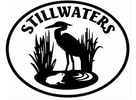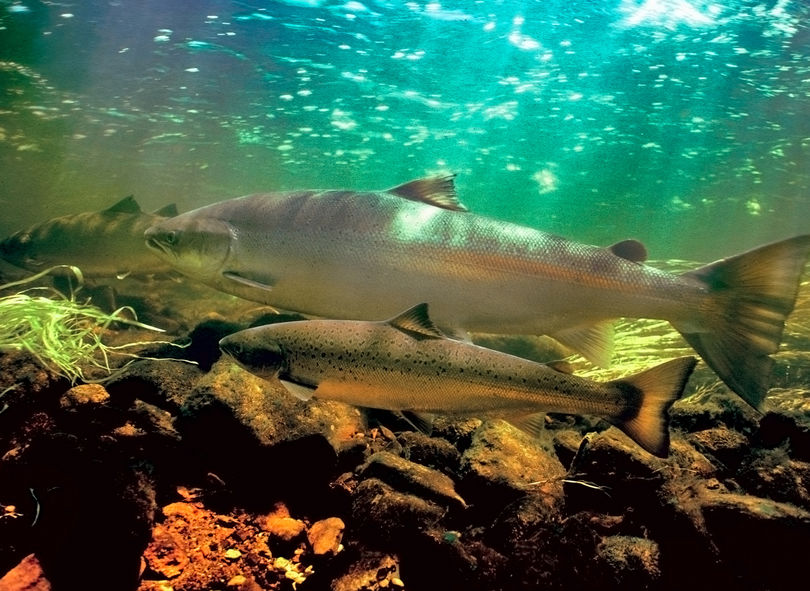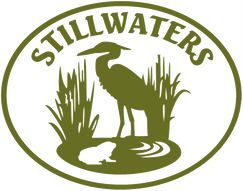|
At last night’s virtual Stillwaters happy hour: believe me (it was “happy), I checked in a little late as Melissa was finishing a Salmon story about Steelhead negotiating the Hood Canal Bridge. That sparked my memory about my own Salmon migration story. I promised the group I would share the details in writing at a later date due to the length and complexity of “the Salmon story." The story follows:
In 1986 (dating myself) I worked for the Navy Fuel Department in Manchester, WA. If you are not familiar with the Port Orchard area, this facility is just east of Port Orchard on Puget Sound across from the south-eastern tip of Bainbridge Island. My job position required me to oversee many of the environmental programs involving coordination with EPA, Department of Ecology, and the Puget Sound air quality folks. We also had a natural resources volunteer program that I was tasked to oversee. Our Deputy Director was very proactive in creating projects to reintroduce spawning Salmon into Beaver Creek that runs through the Navy property. In coordination with the state fisheries department, we became one of the facilities chosen for the Salmon delayed release program. This program involved raising Coho Salmon in net pins just outside a given stream in Puget Sound. The theory was, and may still be, that if Coho are delayed in migrating out to the ocean, they will not travel as far - maybe stay in Puget Sound and imprint on the closest stream. In our case, this was Beaver Creek that ran through the Navy property just prior to discharging to Puget Sound. We did this from 1986 to 1990 when I left to work for the Naval Facilities Engineering Command, in Bangor. We would receive about 20,000 Coho Fry to raise and feed in the pin for 3 to 4 months. Along with raising Coho Salmon, we repaired the fish ladder at the mouth of Beaver Creek and eliminated all other obstructions in Beaver Creek that preventing spawning migration. The Manchester Fuel Department was part of EPA’s National Pollution Discharge Elimination System (NPDES). This is a program where all fuel storage facilities are required to monitor water discharges from areas containing fuel storage tanks and discharging to navigable waters. We had seven of these bermed areas where storm water was collected and routed through oil/water separators prior to entering Puget Sound. In case of spills or leaks, the separators would remove the oil from storm water. We were required to inspect/clean and sample discharge from the oil/water separators once per month. One of these bermed areas contained five 50,000 barrel above ground jet fuel tanks. The bermed area collected storm water and discharged it through oil/water separator number 6 and out to Clam Bay (Puget Sound) in close approximation to the discharge of Beaver Creek. It was either the fall of 1986 or 1987 that we realized we had done a fair job of attracting spawning Salmon to Clam Bay. One fall day, I received a call from the fuel crew inspecting separator number 6. They informed me that there were fish in the separator. I asked them if they thought someone had thrown their gold fish into the separator. They informed me that these were, in fact, large Salmon. I arrived on the scene and began to assist in the Salmon extraction process. As it turns out, the separator was just across a paved road from Beaver Creek so we hand carried the salmon over to the creek, on-by-one. This was not an easy task given the slimy skin typical to a spawning salmon. I spotted an individual that seemed much larger than the others that were mostly 5 to 10 lb Coho. It was either a very well fed Coho or a Chinook that decided to take a shortcut to the nearest stream. I hit the paved road at a run with this 15 to 20 lb slab of meat. I got to the middle of the road when my passenger decided to protest. This released my grip and we both went sprawling along the road for about 10 feet. I tried my best to soften the Salmon landing and the fish seemed to have survived. In doing so, I went home that night with a good case of road rash - really wanted this fish to spawn in our rehabilitated stream. I picked up my passenger and made it to Beaver Creek. That day we must have transported 15 to 20 salmon before we blocked off the separator and did more modifications to the Beaver Creeks salmon ladder. The next fall was a little less labor intensive. I have not been back to Beaver Creek to see the fruits of our labor. Maybe this fall I will check it out. In 1986, the Manchester Fuel Department won the Navy’s annual environmental award - a competition that is Navy-wide.
0 Comments
Your comment will be posted after it is approved.
Leave a Reply. |
AuthorKen Patterson; Board President Archives
May 2021
Categories |
|
FIND US ON SOCIAL MEDIA
|

 RSS Feed
RSS Feed

